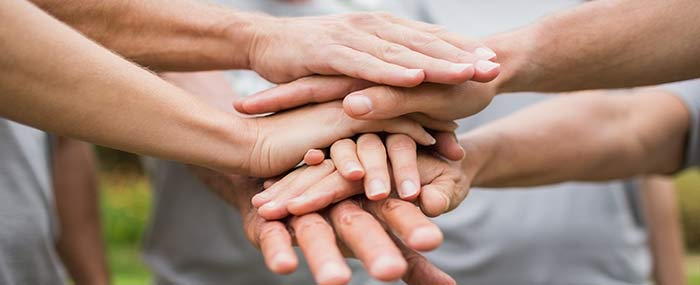All too often, we hear of people in need, of too many people going without.
And as the holiday season fast approaches here in the United States, opportunities for kindness and helpfulness start to ramp up – a lot of people annually volunteer their time at local soup kitchens or set aside money, food, or toys to donate to their local community center – and frankly, oftentimes, it just feels good to be a giver.
So how might we reap this benefit on a more daily basis? Can mindfulness help us cultivate a stronger sense of empathy and selflessness?
To answer these questions, Helen Y. Weng and researchers at the University of Wisconsin-Madison conducted a study to see whether compassion training might change pathways in the brain in response to suffering, and make people more altruistic.

For the study, researchers randomized participants into either a compassion training group or a reappraisal training active control. The experimental group did 30 minutes of compassion training each day for two weeks, and the control did 30 minutes of reappraisal training every day for two weeks.
The compassion training was based on loving-kindness meditation, and consisted of practices meant to develop deeper compassion for others, including loved ones, strangers, and acquaintances. For instance, participants were instructed to consider someone’s suffering and hope that he or she would become free of it.
The reappraisal training, on the other hand, was based on cognitive behavior therapy. It involved the participants reinterpreting a personally stressful event from the last 2 years in a more positive light.
After two weeks, participants came back into the lab and were shown pictures of suffering (people in pain, violence, or stress) and neutral photos (people walking or going to work). As they viewed the pictures, the compassion group was asked to express compassion toward the people in the photos, while the reappraisal group was instructed to silently reinterpret the meaning of the photos, and feel more positive toward them.

During this task, participants in each group were given fMRIs to determine which parts of the brain were activated in response to others’ suffering.
Then, each participant was instructed to perform an altruistic task. For this part of the study, participants played an anonymous online game during which they watched a dictator give an unfair amount of money to a victim who had none. The participant was then given the opportunity to share any amount they wished of their own money ($5) with the victim, which would then be doubled by the dictator.
The results of the study are promising.
During the first part of the study, researchers measured neural responses to each picture. For the compassion group, fMRIs showed greater activation in the inferior prefrontal cortex, part of the brain involved in the mirror-neuron network – which helps us understand the actions of others – and greater connectivity between the dorsolateral prefrontal cortex and the nucleus accumbens. Neither of these changes were found in the reappraisal group.
And during the game, the compassion group gave 1.84 times more money to the victim than did the reappraisal group ($1.14 compared to $0.67).
Of course, this research does have a few limitations. For one, researchers didn’t determine baseline levels of altruism for the participants. Also, the study didn’t follow participants over a long period of time, and the sample size was small.

However, the results imply that compassion and altruism are traits people can learn and strengthen. Plus, compassion training actually seemed to change how the brain reacts to suffering.
You can find more about this study in Psychological Science.
And for practical ways to help people cultivate compassion, check out our courses on mindfulness.
How have you used mindfulness to help your clients feel more compassionate? Please share your thoughts in the comment section below.
I loved listening to Tara talking about self compassion! Everything she says is so simple and yet profound, and helpful for both myself and clients I work with. Thanks for this wonderful sharing, and for this great article also on that subject. It’s so wonderful to know that we’re not stuck in our past, but can learn greater kindness, empathy, and compassion, and always express more of that to ourselves and others.
A client came in one day feeling depressed and angry at the world. “Everyone walks around with a frown”, she muttered. I suggested that when she went outside, she should consciously smile and make eye contact with people as she walked. She looked dubious, but called me a few days later to tell me how everyone suddenly seemed to be smiling, some even said “hi”, ad she was feeling much better. Did I think it was a change of weather, or did her just smiling make that much of a difference!
Warm greetings,
I found this most interesting any ideas where I could over my services on Christmas Day teaching people how to Exchange Anxiety for inner peace Reducing the emotional pain associated with significant Loss I live in scotland
hmmm, I wonder if they would let you try this in a prison outreach program
NICABM has some great info on Mindfulness being used to increase compassion in prison settings on their web site from earlier programs. Really beautiful!